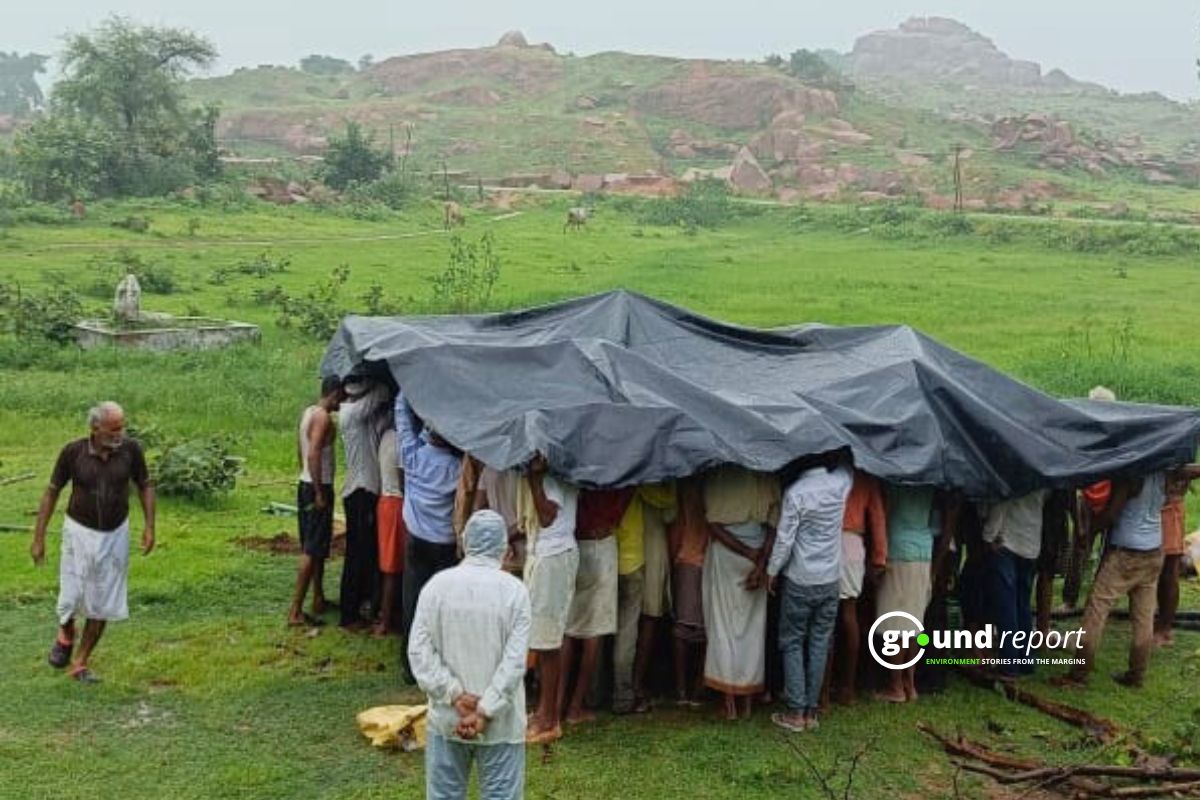On August 6 at 5:30 AM, a cloudburst, a kilometer away from his village Doonga in Dinga Amb district Kathua, damaged 15 houses and left families homeless. This cloudburst left Talib Khan’s to rebuild his life as he lost his home and most of his livestock.
Talib’s voice trembled as he recounted the events. “Everything we built and depended on is gone,” he said, the pain evident in his words. “I was in Kashmir (Anantnag) with my father; we spend the summers in the mountains with our animals. Around 6 AM, my elder brother contacted us about the disaster.” He said, “We lost one of our cows, and two calves are still missing. Another cow is injured, and we don’t know if she’ll survive. The animals are our livelihood; their suffering is heartbreaking.”
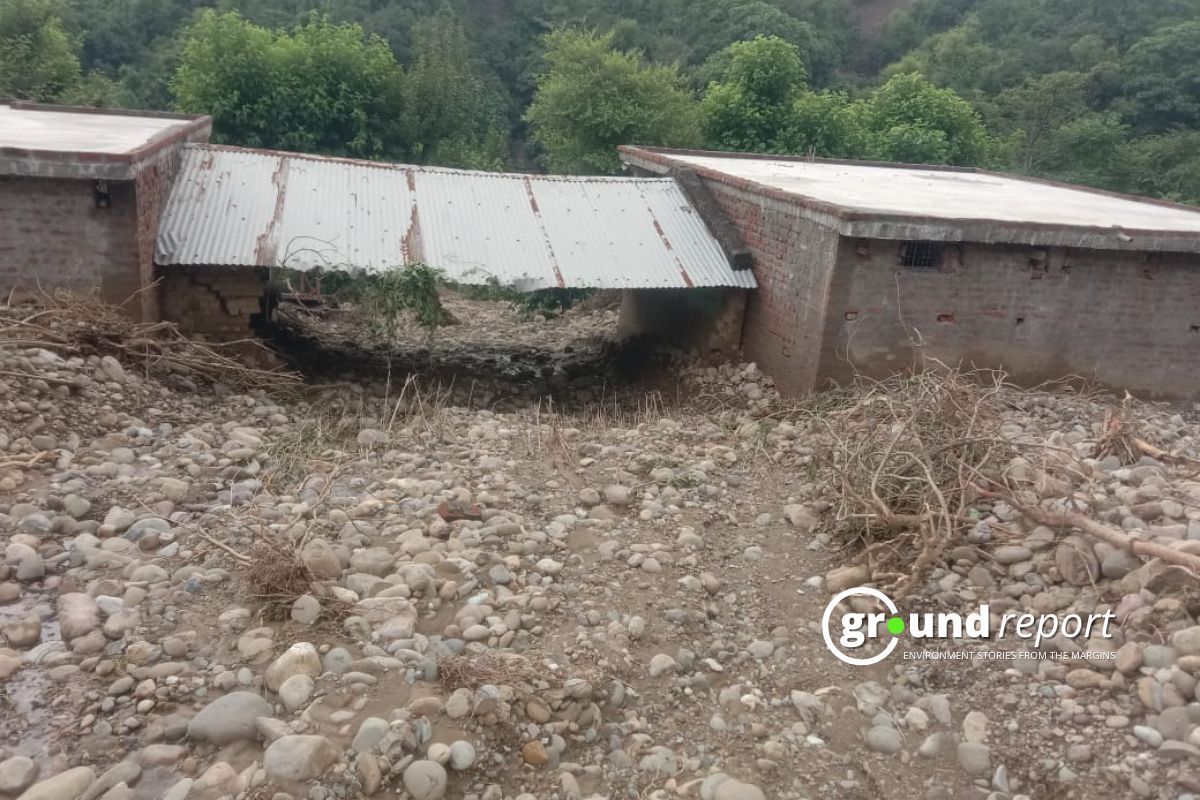
Talib belongs to the Gujjar community of J&K. The Economic Survey of J&K reveals that over 42% of the Scheduled Tribes, mainly Gujjars and Bakarwals, live below the poverty line and are highly vulnerable. Early migration, due to global warming, has increased livestock mortality, impacting livelihoods. These nomadic pastoralists depend on the seasonal migration of their livestock between the Himalayan pastures. Unpredictable weather patterns, including snowfalls and cloudbursts, have disrupted their traditional way of life.
Reflecting on the future, Talib expressed his fears: “We have nowhere to live, and we don’t know how to rebuild. The children are terrified; they can’t sleep. We’ve lost almost everything; starting over is overwhelming.”
The devastation in Doonga adds to the challenges faced by the Gujjar and Bakarwal communities in J&K.
Cloudburst devastates village and livelihood
Talib said, “The water came so quickly, we had no time to save anything. Our fields were submerged, and the crops we worked hard to grow were washed away. The cow shelter was flattened, and now we have no safe place for them. The kitchen we built last year was destroyed, and nearly 13 kanals of our land were damaged.”
The Doonga cloudburst highlights the challenges faced by Jammu and Kashmir’s Gujjar and Bakarwal communities. As of 2011, these tribes were classified as Scheduled Tribes and made up 12% of the state’s population. The Gujjar tribe has 763,806 people (69.1% of the ST population), while the Bakarwal tribe has 60,724 people. As per some activists estimates, the Gujjar and Bakarwal tribes could make up 20% of the state’s population.
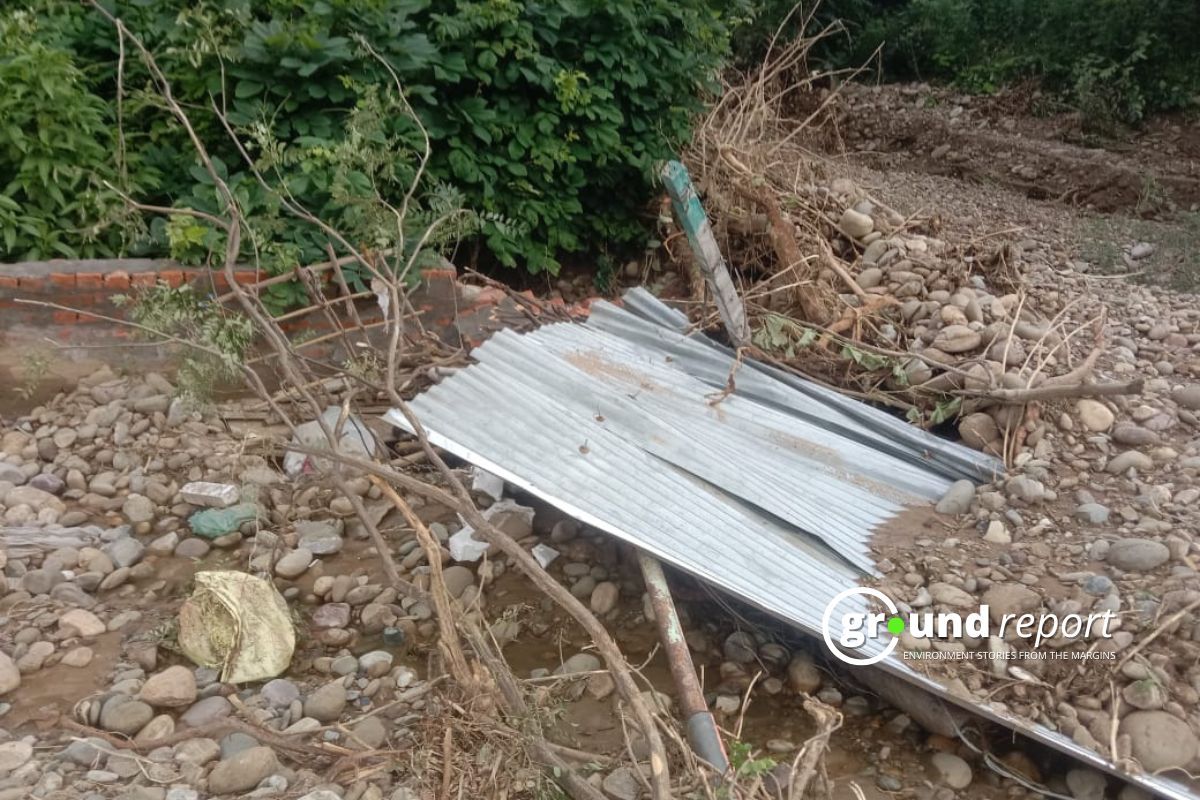
Local Mushtaq Ahmad shared his experience of the disaster: “The cloudburst flooded our village, destroying our houses and the shelter for our cows. The water pond in the village overflowed and is now buried under the landslide that came due to cloudbrust. Now, we have to walk far for drinking water. We’re facing a water shortage, and the children are panicking.”
The destruction was widespread. Eight houses in the village were damaged—three mud houses and five concrete structures. One of Talib’s cows died, another was injured, and two calves were missing. “The police arrived, but the situation remains dire,” Talib said. “My brother and I were out. My mother and aunt were at home with the children. Our kitchen, built last year, was destroyed, along with three animal shelters.”
Studies show that the Gujjar and Bakarwal communities primarily rear animals, engage in subsistence agriculture, and make handicrafts, with animal husbandry as their main occupation. However, their per capita income and economic condition remain poor due to low education and limited awareness of government schemes.
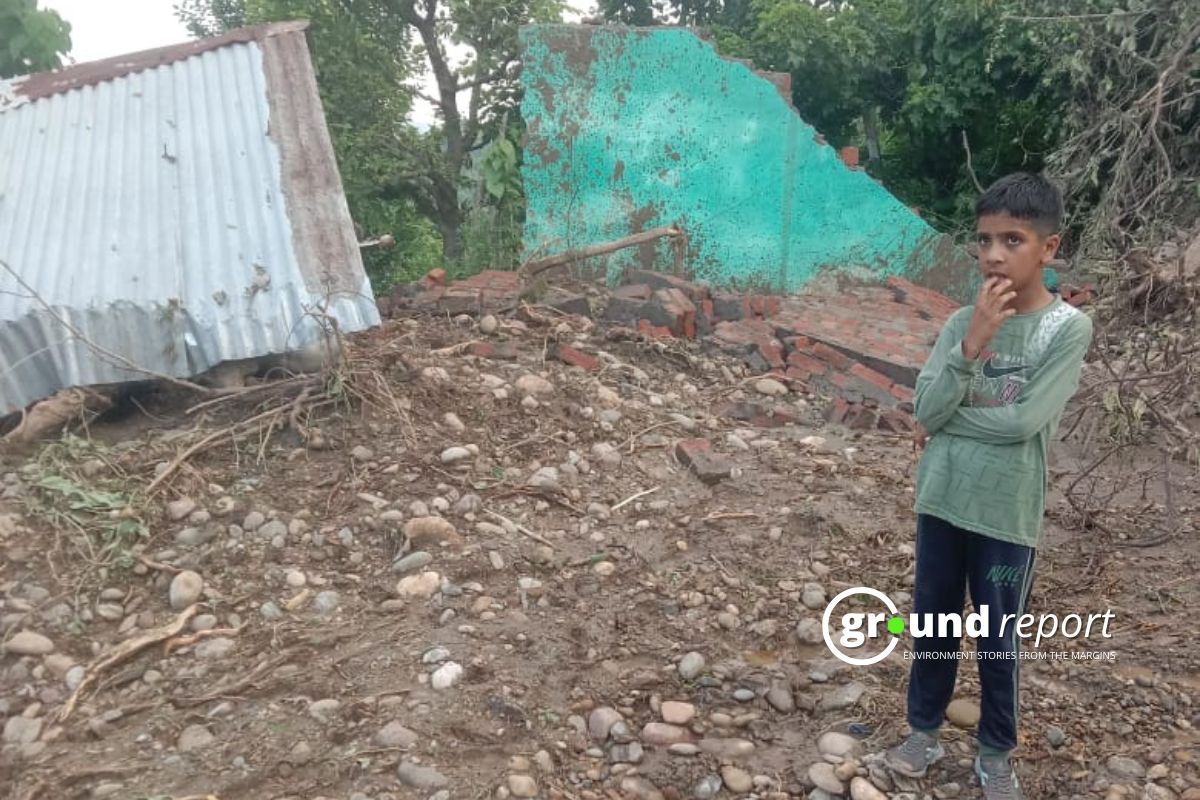
“The pastoralist community is among the most vulnerable to disasters,” wrote researchers Sajad Ahmad Mir and Maliha Batool in a paper titled Impact of Climate Change on Gujjar and Bakarwal Communities of Jammu and Kashmir. They said the convergence of land-use change and insecurity “impairs the resilience of social and ecological systems.”
Environmental degradation, vulnerable tribes, disrupted livelihoods
These communities, deeply connected to their land and traditional ways of life, are increasingly affected by environmental degradation. The recent cloudburst in Doonga highlights the urgent need for support and strategies to protect these vulnerable populations.
Talib Khan and his family hope for assistance. “Our fields and 13 kanals of corn land are destroyed. Most houses are gone, and the locality is crammed into a few remaining ones. We received no help from the Red Cross.”
The recent cloudburst in Doonga is a reminder of how extreme weather events can devastate communities, washing away homes, livestock, and years of hard work. These challenges have forced Gujjars and Bakarwals to change their migration patterns due to rising temperatures and reduced rainfall, leaving pastures barren and water scarce. Events like the Doonga cloudburst destroy physical assets and worsen the vulnerabilities of these communities. The loss of livestock and land threatens their livelihoods.
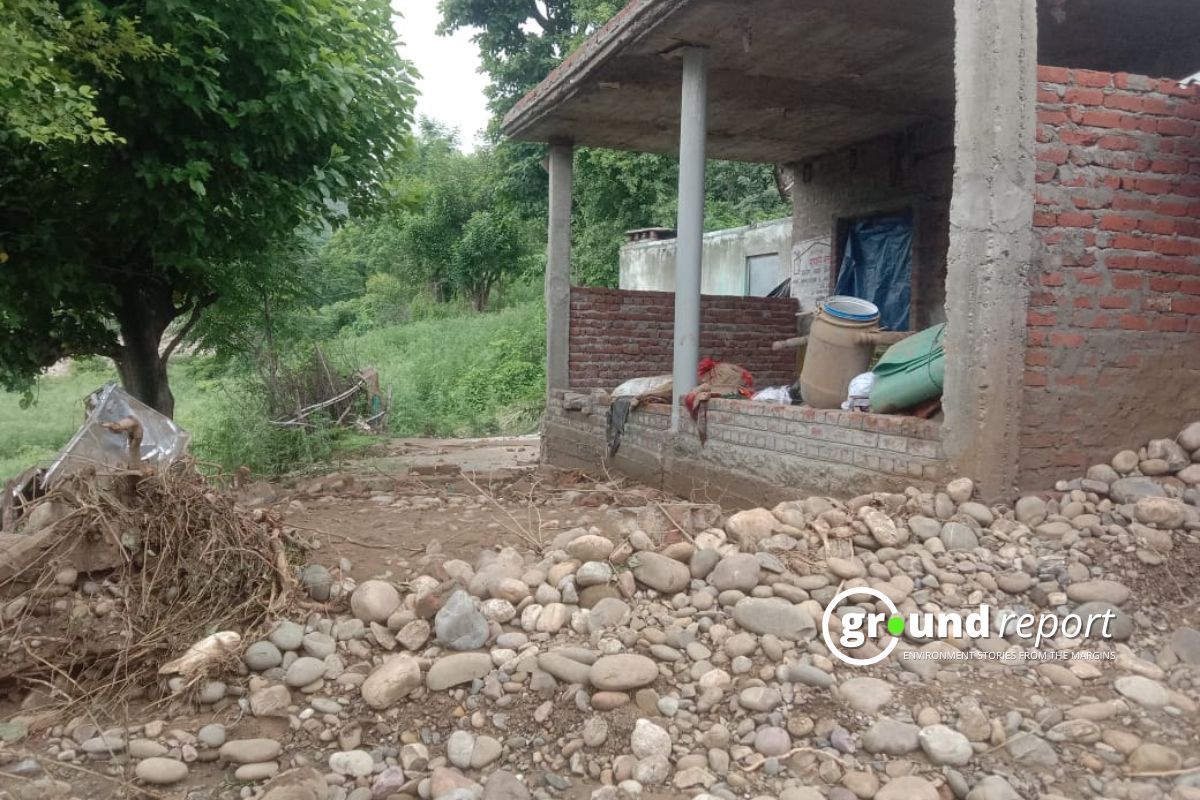
Governmental response
Mushtaq said, “The administration hasn’t provided much support yet, but our sarpanch has visited and spoken with us. Our biggest problems are the lack of drinking water and transportation. It’s tough without a vehicle. I hope the administration will step in soon.”
“No help yet,” Talib said. “The patwari came, saw the damage, and left. We’re facing a severe water shortage and must bring water from a kilometer away. The children are scared.”
Rakesh Kumar, SDM Hiranagar, told Ground Report, “It wasn’t just a cloudburst; it triggered a significant landslide due to the loose hills, causing a flood that damaged 10 to 15 houses.” He added, “We’ve documented all disaster cases and sent reports to authorities, with Red Cross assistance proposals. We’ve shifted affected families to government schools and provided food for those in need.”
Rakesh Kumar also pointed out, “Some damaged houses were built on encroached state land without permission, complicating the compensation process. We’re incorporating affected individuals into government schemes where possible, but compensation is challenging in encroachment cases. The Tehsildar has provided temporary accommodations in schools, and further assistance can be sought from my office.”
Regarding the loss of livestock, SDM Kumar said, “We’re conducting an inquiry, and the report will help the affected people.”
When we tried to contact Predhyum Atri, the Tehsildar of Dinga Amb, he did not respond. We will update the story if we get a response.
Keep Reading
Part 1: Cloudburst in Ganderbal’s Padabal village & unfulfilled promises
India braces for intense 2024 monsoon amid recent deadly weather trends
Support us to keep independent environmental journalism alive in India.
Follow Ground Report on X, Instagram and Facebook for environmental and underreported stories from the margins. Give us feedback on our email id greport2018@gmail.com.
Don’t forget to Subscribe to our weekly newsletter, Join our community on WhatsApp, and Follow our YouTube Channel for video stories.



